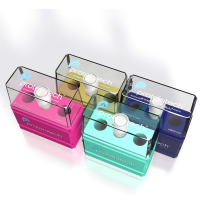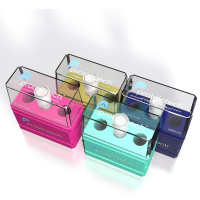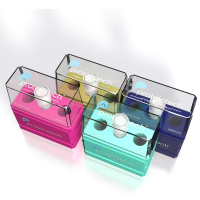DNA克隆
互联网
DNA 克隆(主要内容如下)
・ General Procedure
・ PCR Cloning
・ Subcloning
・ ET Cloning
・ Vector Preparation
・ Ligation Reaction
・ Colony Screening
・ DNA Cloning (Clonit) (Worthington)
-
- Preparation of DNA Fragments for Insertion into Vector
- Preparation of Cleaved Plasmid DNA
- Ligation
- Preparation of Competent Cells
-
Transformation
・ DNA Cloning (Fermentas)
Provides the following details:
1. Cleavage of the DNA vector.
2. Dephosphorylation of DNA vector cleaved at unique site.
3. DNA fragment preparation.
4. Filling-in of 5'-overhangs of the DNA fragment and/or vector termini.
5. Ligation.
6. Transformation.
7. Clone selection.
・ Cosmid cloning (NWFSC)
Cell preparation, DNA packaging, and Cell Transfection
-
DNA Subcloning (Donis Keller Lab)
The method is used to clone smaller portions of inserts (up to 15 kb in size) which previously have been cloned in YACs phage cosmids or other plasmids.
-
Quick Shotgun Cloning of Phage Inserts (Schneitz Lab)
Cloning DNA into phage vector
-
Random Subclone Generation (Roe Lab)
This is a complete protocol for the whole procedures- DNA Sonication
- DNA Nebulization
- Random fragment end-repair, size selection, and phosphorylation
- DNA ligation
- Competent cell preparation
- Bacterial cell transformation
- Microcentrifuge tube transformation
・ PCR Product Cloning (Michael Blaber's Lab)
This is a very useful guide to PCR cloning. Three strategies are described in great detail including introducing a restriction site, generation of half site and TA cloning.
・ Cloning PCR Products (Graham Casey)
This protocol describes every aspect of cloning PCR products such as insert preparation, vector preparation, ligation, transformation and more
・ Direct Cloning of Blunt-end PCR Fragments (Gerard Lazo)
・ Cloning PCR-Generated DNA Fragments (Gerard Lazo)
・ Making TA vector (Mounir Izallalen, MBS)
A method for direct cloning a PCR product, by the T-vector technique. It is cheap, as it describes how to make the vector.
・ Cloning PCR Product (Fermentas)
Including PCR primer design, DNA preparation, ligation, transformation...
・ Blunt End Cloning PCR Products (HanCock Lab)
・ Phosphorylating PCR Products (Crawford Lab)
-
One Tube PCR Cloning Method (Chun-Ming Liu)
This method has 3 reactions (restriction, polishing and ligation) carried out in one tube using ligation buffer. Believe or not, it works very well without using expensive kits.
-
Easy Subcloning (Michael Koelle)
The following protocols minimize the number of manipulations required to prepare DNA fragments for ligations, thereby both saving time and increasing reliability.
ET Cloning
・ ET Cloning (Francis Stewart's Lab)
Background information on ET cloning
・ ET Cloning Protocol (Francis Stewart's lab)
-
Vector preparation (WUGSC)
Provides detailed steps for preparing vector DNA for cloning
- Dephosphorylation of Vector Plasmid (Gerard Lazo)
・ Ligations in Low Melting Temperature Agarose (Donis Keller Lab)
Ligation of plasmid vector and insert DNAs is carried out directly in melted agarose gel slices. This method is used for subcloning well defined restriction fragments and is probably not suitable for genomic library construction. The method works for both blunt-end and cohesive termini ligations.
・ Ligation (Crawford Lab)
・ Cloning in the Presence of Agarose (FMC)
For ligation reaction without purifying DNA
・ In-Gel Cloning (Crawford Lab)
Digest your vector and insert DNA and purify by gel electrophoresis and do ligation without further recovering DNA from gel. It works great!
・ Screening clone by PCR ( Herskowitz Lab)
・ Colony lifts
・ PCR screening of transformants ( Crawford Lab)
Quick screening of transformants without minipreps
・ In situ screening of bacterial colonies (NUNC)
Positive clones are selected after plasmid cloning. This is often done by DNA probe hybridization in situ to plasmid DNA containing E.coli cells. This protocol can be used for most plasmid cloning events in E.coli cells including in situ immunoscreening.
・ Slot Lysis (Hancock Lab) (Accessible only by IE)
This is a quick method to determine the presence of cloned fragments in plasmids after ligation/transformation.







